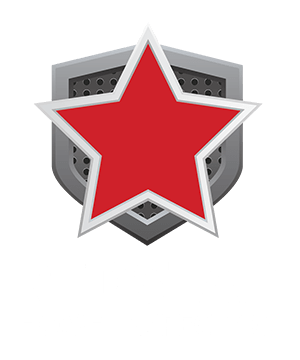Katy Home Inspection – RedStar Professional Home Inspectors
Your home inspector glossary for Katy home inspections and surrounding Houston areas.
Glossary – W
Wainscot: A facing or panel that is applied to the walls of a room. The lower part of an interior wall that is finished with a material different from the upper part.
Wall: A vertical structure of stone, brick, wood or other similar material that encloses, divides supports and protects; e.g., one of the vertical enclosing sides of a building or room.
Wallboard: Any artificially prepared sheet materials or panels that are used to cover walls or ceilings as a substitute or base for plaster .
Wall Furnace: A small, gas-fired hot air furnace that fits between the studs of a wall has no ducts; uses a small fan to circulate room air through the furnace and to distribute heated air.
Warm Air System: A heating system in which furnace-heated air moves to living space through a single register or series of ducts circulated by natural convection (gravity system) or by a fan or blower in the duct work (forced system).
Washer: Flat disc with a center hole sued under a screw, bolt or nut.
Water Flow Rate: The quantity of water measured in gallons per minute. Minimum flow is 3 gallons per minute for a prolonged period of time to the average single family residence.
Water Line/Main: Pipe supply water from source to point of use. Several types of material – brass, copper, CPVC, galvanized, lead, polybutylene, cast iron, wood – may be used.
Water Pressure: Force applied to water enabling it to flow through a restricted water line. Pressure is measured in Pound Per Square Inch (PSI). Average pressure is considered between 30 to 60 PSI.
Waterproofing: To make impervious to water or dampness.
Watt: A measure of electricity equal to the power created by a current of one ampere flowing at one volt pressure.
WC: Water Closet. Room containing toilet and wash basin.
Wear and Tear: Loss or damage resulting from use.
Weatherstrip: A thin strip of metal, felt, wood, etc., that is used to cover the joint between a door or window sash and the jamb, casing or sill; keeps out air, dust, rain, etc.
Weep Hole: Small opening at the bottom of a retaining wall or the lower section of a masonry veneer facing on a wood-frame exterior wall, which permits water to drain.
Well: A hole drilled into the earth, generally by boring, to obtain water.
Well Water Yield: The amount of water a well is capable of producing.
Wet-Sanding: Using water and fine sandpaper with a waterproof blacking, known as wet-or-dry paper, to achieve a smooth finish on joint compound without clogging the sandpaper’s abrasive grains.
Whirlpool Bath: A bath in which the water continuously circulates in a circular motion and in which the temperature can be set at varying degrees.
Window: A glassed opening in a wall or ceiling that provides natural light and ventilation; types include awning, casement, circle-head or fan, clerestory, double hung, fixed and traverse or sliding.
Window Sill: The lower or base framing of a window opening.
Window Wells: A device installed outside of a window in a foundation to allow grading and not cover the window with earth.
Wing: A building section or addition projecting out from the main structure.
Wood Destructive Insects: Any insect or organism capable of causing damage to wooden members.
Wood Frame Construction: Construction in which walls and partitions are formed by the wood framing of studs, or posts and girts, supporting a wooden roof and floor decks; may be covered with wood, metal, stucco, composition siding or shingles or veneered with brick or stone facing.
Wood Preservative: Chemical applied to wood to protect it from insects, dry rot and moisture.
Worm Gear: Toothed gear and screw combination found in casement window operators and in tilt mechanisms of venetian blinds.
Woven Valley: Method of valley construction in which shingles from both sides of the valley extend across the valley and are woven together by overlapping alternate courses as they are applied. The valley flashing is not exposed.
Wrought Iron: A comparatively pure form of iron with practically no carbon, that is easily forged, welded. Steel that has been molded and worked into ornamental shapes and patterns; used for railing, gates, furniture, etc.






